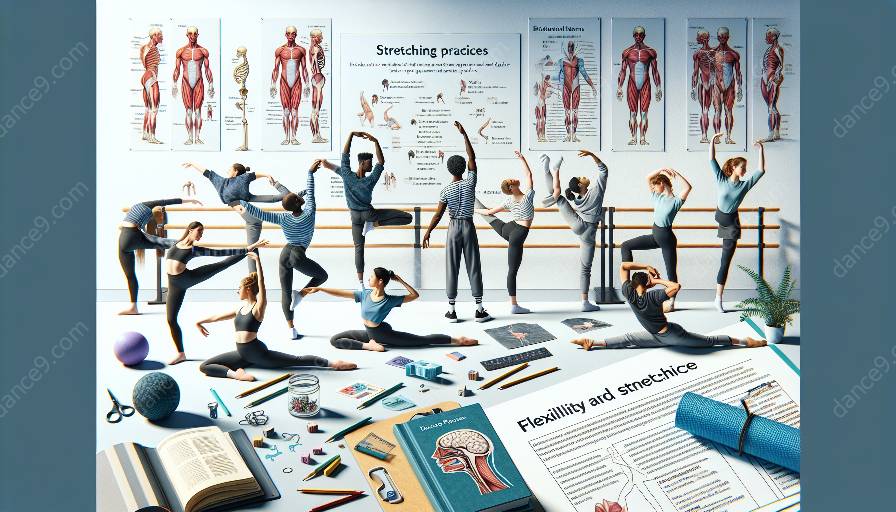Flexibility is an essential component of dance, as it allows dancers to achieve a greater range of motion and execute movements with grace and ease. Moreover, when it comes to injury prevention, flexibility plays a crucial role in maintaining the physical and mental health of dancers.
The Importance of Flexibility and Stretching for Dancers
Flexibility and stretching are integral to a dancer's training regimen. By improving flexibility, dancers can elongate their muscles, improve joint mobility, and enhance their overall performance. Stretching helps to prevent tightness in muscles and reduces the risk of injury during dance routines and performances.
A comprehensive stretching routine can also improve a dancer's posture, balance, and alignment, leading to a more polished and controlled execution of movements. It promotes body awareness and allows dancers to move fluidly and with precision, thus elevating their artistry.
Impact of Flexibility and Stretching on Physical and Mental Health in Dance
In addition to its physical benefits, flexibility and stretching have a significant impact on a dancer's mental well-being. Regular stretching can help reduce stress and tension in the body, promoting relaxation and mental clarity. It also fosters a sense of mindfulness and focus, which are essential for dancers to connect with their movements and express themselves effectively.
Furthermore, flexibility and stretching contribute to injury prevention by ensuring that muscles and tendons remain supple and resilient. This reduces the risk of strains, sprains, and other dance-related injuries. By maintaining optimal flexibility, dancers can continue to pursue their passion with reduced downtime due to injuries, ultimately enhancing their overall physical and mental health.
The Relationship Between Flexibility and Injury Prevention
Flexibility directly correlates with injury prevention in dancers. A well-rounded flexibility training program aids in improving the elasticity and strength of muscles, tendons, and ligaments, thereby reducing the likelihood of overuse injuries and strains. Additionally, flexible muscles and joints allow for a wider range of motion, which enables dancers to execute movements safely and with decreased risk of injury.
It is essential for dancers to strike a balance between flexibility and stability to support their bodies effectively during complex movements and challenging routines. Strengthening the muscles around flexible joints provides added support, enhancing stability and reducing the risk of overextension or hypermobility-related injuries.
In conclusion, flexibility and stretching are fundamental to a dancer's physical and mental well-being, as well as injury prevention. By incorporating a comprehensive flexibility training regimen into their practice, dancers can not only enhance their performance but also safeguard themselves against the risks of dance-related injuries, ultimately contributing to their longevity and success in the art of dance.


































